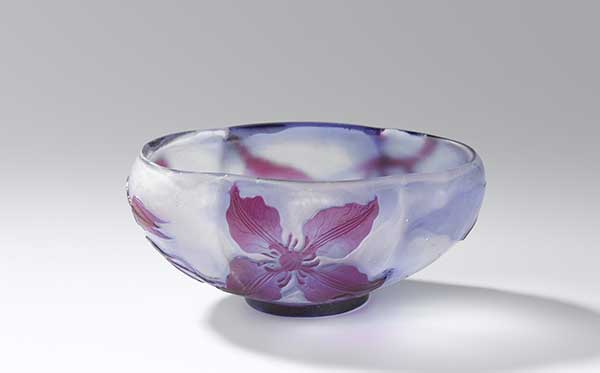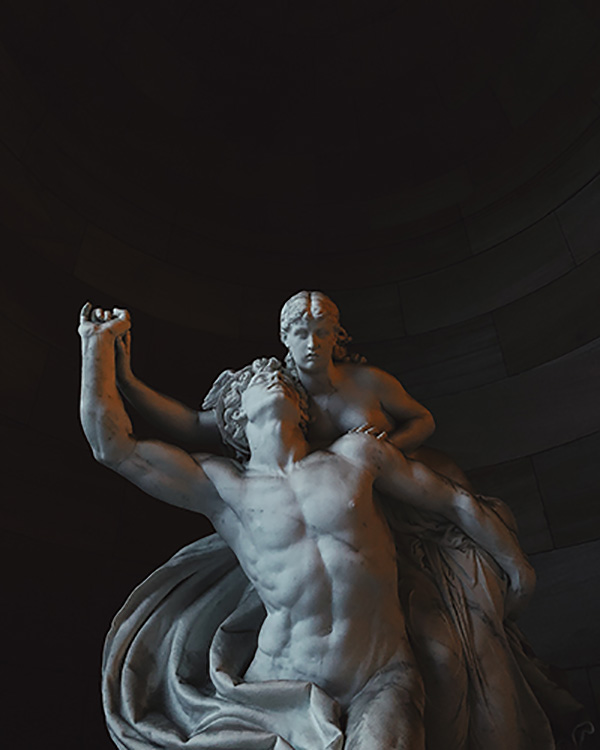
Bowl With Clematis
I really like this Bowl with clematis. Let’s go back to its production date. In the late 19th century, the artists of applied art design took inspiration for their work from the Arts and Crafts Movement. They created an elegant, new, dynamic style, the Young Art, the Art Nouveau, which stood against classical and traditional art. This unique manner of artistic expression, influenced by the beauty of Japanese woodblock prints, had tried to offer an inherent natural beauty to art. Artists of Art Nouveau took the organic floral and plant motifs to reveal their designs in delicate, curvy shapes with natural patterns. All the genres of applied art, especially glass art, metal art, jewellery, were included in this dominant movement, as also pottery and ceramics, which in these series of articles capture our attention today.
Émile Gallé was the famous glassmaker from France, the founder of the École de Nancy or Nancy School, a group of Art Nouveau artisans and designers working in Nancy, France at the turn of the 20th century. Gallé’s family members were glassware and ceramics merchants and manufacturers. As a young student, Émile Gallé studied philosophy, botany, sculpture and drawing and was later in charge of the entire management of the family glass industry in his 28th year. Émile Gallé expanded the business and hired 300 employees in the following years. His designers had some permissions and design options, but they were obliged to use curved and flowing natural shapes and follow the artistic rules of Art Nouveau. The designers of Gallé ‘s workshop were inspired by the plants and flowers and used them as models in their work.
Émile Gallé, The Great Glass Master
Gallé developed techniques as cased glass, with different layers and colours. He blew the inner layer through the first one and fused both inner and outer layers as a whole piece at high temperatures. Also, he used the cameo technique for carving with a diamond saw and acid-etched method to achieve a luxurious form of glass art and shaped opaque glass motifs on the dark backgrounds. Furthermore, he created many other decorations on the surface with engraving, sandblasting. He used those innovations to obtain shining effects, subtle colours and unusual forms. Last not but least, by applying layers of glass to an object, he invented glass marquetry to create an inlaid effect. He was a great glass master of all times and continued searching for new ways of producing glass art.
Let’s focus once more on the lovely purple-blue piece from the collection of the Rijksmuseum, the Netherlands. See the featured Image above.
Title: Bowl with clematis
Description: Slightly concave bottom. Colourless glass in purple and blue.
More Description: The decor, a clematis, applied in two etchings, acid polished and cut.
Designer: Émile Gallé
Location: Nancy
Date: c. 1900 – c. 1902
Material: Glass
Technique: glassblowing / etching / grinding / polishing
Measurements: Height 6.5 cm × Width 13.5 cm × Depth 9 cm
Collection: The Rijksmuseum
Get more information on this overview page.
Text: Lalerou
© Copyright. All Rights Reserved
- Category: Vintage- Modern Table Settings
Vintage

Vintage